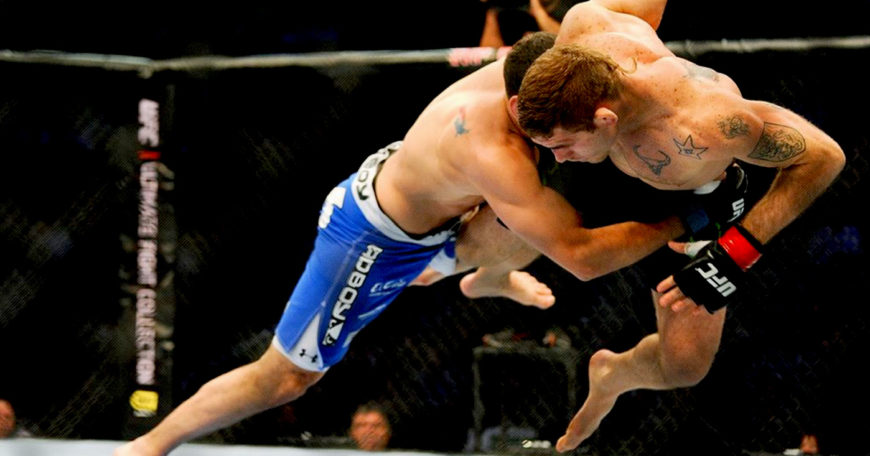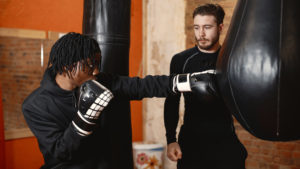Has one ever truly practiced a martial art without engaging in sparring? Honestly, it’s a no from me. Sparring is an essential part of the learning process and without it, you are only exposed to a fraction of your chosen discipline. It is the glue that binds all other areas of your training together. In Thailand, fighters devote daily hours to “play”, a form of light sparring that allows them to try new things, have their weaknesses exposed and problem solve. By the time they’re in a fight, they’ve already encountered the numerous issues that can arise and have practiced how to overcome or counter them. It’s a form of troubleshooting, if you will.
Whether or not you ever intend to fight, sparring really does multiply your efforts and your skills increase drastically by participating in it. However, when you are a beginner watching big sweaty men punch and kick each other in the head, it does seem like a scary prospect.
We feel you. To help you overcome that barrier here’s everything you need to know to get you prepped and psyched for your first spar.
1) Clear it with the Coach
First and most importantly, clear it with your coach. Different gyms have different rules, some have set skills that must be mastered, while others will require a specified attendance. Some even require promotion into a class of a certain experience level e.g. from ‘intro’ level to ‘general’ level. Besides the rules or guidelines that exist mostly to protect you and other students, it is always worth having a chat with your instructor about your intentions to take your training to the next level.
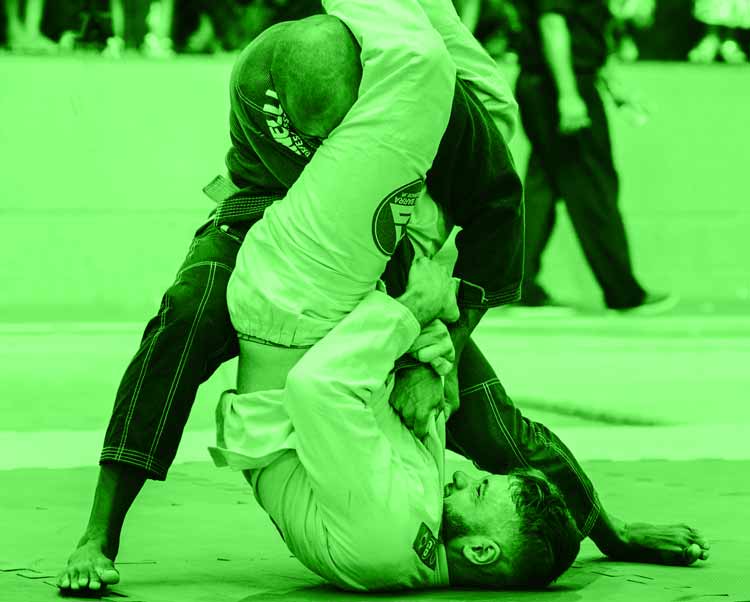
Insider tip: do not proclaim your desire to spar on your first day. All martial arts require a certain level of practice, but also discipline, and this needs to be developed beforehand. Sparring is not about asserting your dominance over your teammates and requires more than just brute force. Just because you’ve had a couple successful street fights does not mean you can go straight into a sparring class. Coaches must be sure you are of a sound body and mind before you join the group.
2) Appropriate Equipment
Make sure you have everything you need to protect yourself – the earlier the better – especially a gumshield. Some gyms won’t let you join in a class without one, but regardless, don’t skimp on this piece at the very least. All decent sporting goods stores will have at least a small range of mouthguards. Make sure to check that it has a guarantee.

Everything else will come down to what you can afford. Choose suitable gloves that can be used for sparring as well, they may need to be heavier than you think depending on your weight. This protects everyone involved.
With regards to shin pads, foam is the cheapest option and is suitable if you are on a very limited budget. However, it’s more painful for both you and your opponent when you choose these as they only do the bare minimum depending on what sport you do.
Moving on to the groin guard. It’s not common knowledge but beginners are actually the hardest to spar. Nerves and inexperience make for an erratic style. This makes it harder to predict what is happening and sometimes this results in misplaced low kicks. A solid kick to the crotch, intentional or not, will take you out of the rest of the lesson. Do your research. Buy a good box.
3) Let Your Partner Know
Always let your partner if you are a complete newbie. Make sure to tell them if it’s your first time. Ask them: “Can we go light? It’s my first spar”.
There really isn’t any shame in this. We all remember how terrifying our first spar was and should know how to control ourselves accordingly. The best gyms allow anyone to work with anyone because all practitioners should be able to practice good control and help those that are just starting out.
4) Keep Your Guard Up
This seems obvious, but isn’t always easy in initial practice. Keep your hands by your head as much as possible. Don’t try to copy the moves you saw on Creed or the latest UFC promo. The greats are great because they are so good they can make what they do look easy. I assure you, it’s far from that. What’s the best way to learn how to keep your guard up? Truthfully, it’s actually getting punched in the face.

It only takes a couple times for you to associate having your guard down with getting hit. You’ll learn to keep your hands up real quick. Guards and stances vary depending on the sport, but as a general rule, keep your rear hand on your cheekbone so you can protect and defend quicker and easier.
5) It’s Normal to be Nervous
Anything new can be scary. Especially when that something new means trying to fight someone for the first time. Generally, sparring is not fighting, it’s a simulation, and it never usually reaches 100% power, especially if it’s your first day. The idea of getting hit is worse than its actuality.
Another insider secret: the nerves never really go away. No matter how good you become, there is always another who can at the very least give you problems. The better you become, the more important your sparring session becomes. Sparring is not designed to be something that becomes easy. And it never really should be, because just over the line of comfort, is where you really begin to learn. The trick is to feel the fear and do it anyway.
6) Some People will always be Heavy Hitters
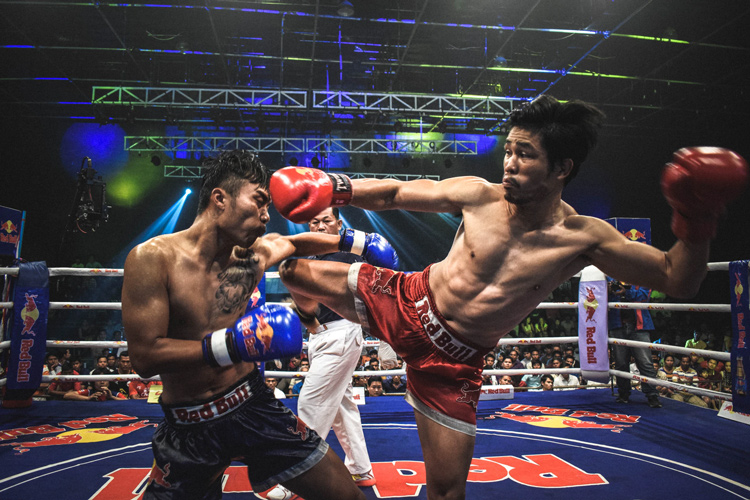
Some people just don’t know their own power. While some do intentionally hit hard, and should be reprimanded, others seemingly just have no gauge and can’t control their power. While this is not necessarily condonable, it’s good to know because it’s often nothing personal and they’re not trying to take your head off, they just have very poor self-control.
You should be able to feel comfortable bringing it up to any sparring partner you experience this with. It’s not an admission of defeat or failure, we should all aim to leave a sparring session without injury, especially a concussion.
7) Don’t Go 100 Percent
Everyone wants to prove themselves, and fear doesn’t help, but often beginners channel this into using 100% of their force trying to take their opponents head off. It’s not smart. If your partner is a beginner, they may not be ready for this, their guard and defence is still being established and it is possible to ruin their experience by doing this. Don’t be that guy. Equally, you take a huge risk trying this with anyone who is more experienced than you.
Don’t mistake their lowering of speed and power as your opportunity to go for it. Mercy can move to punishment if you aren’t careful. Do your best to control your emotions even if you feel frustrated because you feel like you are losing. It’s all part of the process.
8) You Will Become Accustomed to the Pain

When you first watch a sparring class, it can look pretty intense. The noise of shin pads smacking bare thighs and gloves thumping rib cages can be truly terrifying. Receiving your first accurate low kick from a training partner may lead you to wonder why you ever signed up in the first place. This is totally normal. While your first few sessions may admittedly be rough, rest assured, you do build up a strange tolerance to the pain.
It will always hurt to a certain degree, but the amount of attention you pay to it will lessen as you learn how to separate pain levels through feedback. Some will be subtle…next time you will block, and others may be more serious…ask your partner to power down or consult with your coach. Either way, just know that those feelings won’t last forever and will make you tougher as a result. It’s a Martial Art rite of passage.
9) It Will Always be Hard

Martial Arts is a lifelong journey and for most, will never be truly mastered. That’s part of it; training can be brutal. As a beginner, you’ll be learning coordination, footwork, head movement and basic strikes. It’s hard to take all of this in, but after you have, you’ll move onto more advanced techniques, more challenging conditioning and tougher spars, perhaps even signing up for your first competition.
It’s never supposed to get easier, you just get stronger and better able to deal with it. Don’t worry if your first spar feels like a failure. I guarantee you there are professional fighters who go home having the same feeling.
10) Take Appropriate Rest Breaks
Sparring will completely exhaust your energy stores. You never think about how much energy it takes to not only be striking but doing it while someone else is trying to hit you back at the same time. The constant pace that’s needed to stay out of harm’s way alone can be quite taxing. Some coaches will direct who sits out of certain rounds, but if it’s self-nominated, make sure to sit some rounds out to adequately hydrate and recover for subsequent rounds.
While you’re sitting out, make sure to watch other people sparring to see how they deal with things you may struggle with. Just because you’re sitting out doesn’t mean you can’t still be learning something.
11) Take Care of Your Gear
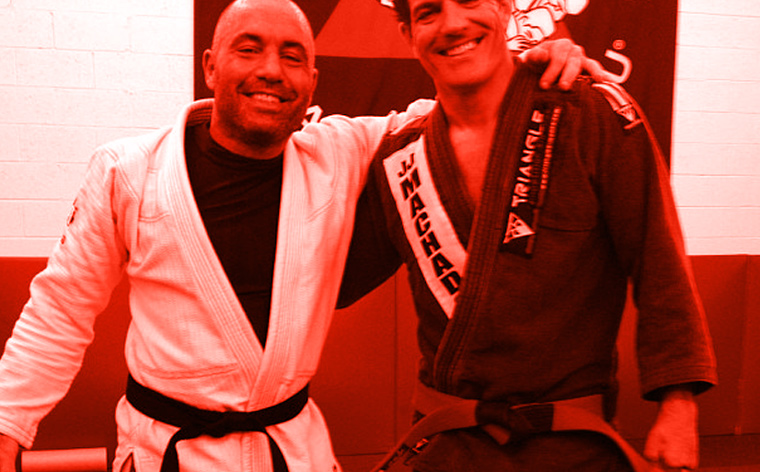
Protective equipment can start to kick up a funk pretty quickly. It’s worth investing in a good kit and taking proper care of it. It will last you years if you do. Keep some antibacterial wipes in your gym bag to clean at the end of each session, making sure to give your gear time to dry if possible. It’s also worth investing in an anti-odor spray because no matter how hard you try, there will always be a little gym funk attached to your equipment.
As for uniforms, wash or rinse them as soon as possible. Even leaving them outside in fresh air can do wonders. But do not ever leave a wet kit in your bag overnight, the smell will spread to everything you own and can permanently affect anything else it touches.
12) Try New Things and Take Risks

Your first sessions may feel like you’re in survival mode. However, once you start to feel comfortable or when you find an appropriate partner, try to execute what you learned in your most recent lessons. This is the best way to fully grasp a technique; by finding out how it works in practice, what issues arise, and how to improve on it.
It’s also an excellent opportunity to take a couple of risks. Yes, sometimes risks have unfavorable consequences, but they can also be rewarded. Risks win fights all the time. You’ll begin to learn which ones pay off and start developing your own system that works for you within the framework of your gym’s style. Nothing ventured, nothing gained.
Conclusion:
We’ve all been there. The fear, the nerves, the awkwardness. These feelings are totally normal and shouldn’t be a deterrent to your participation in a martial art or its sparring sessions. If you ever plan to compete, these sessions are a goldmine of knowledge.
Even if you only ever intend to train recreationally, to get the most out of the time you’ve invested, get down to sparring. Even once or twice a month will see you improve dramatically. Part of developing the mind and spirit of a Martial Artist is to put yourself in pressured situations and truly see what you are made of. I hope you’ll rise up and meet the challenge.

